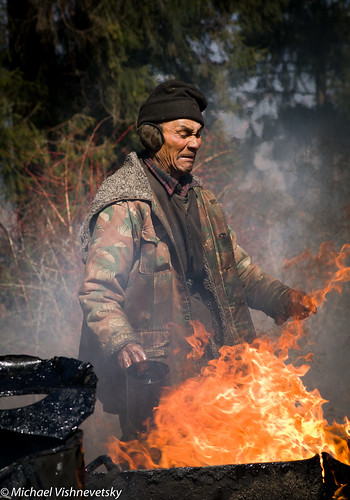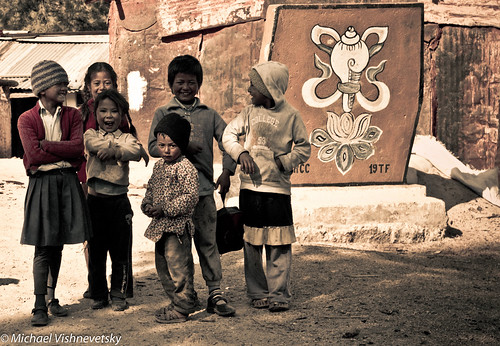Also, we began to encounter Yaks on the side of the road, something that would become an all-too-common sight in Bhutan. Yaks are very interesting creatures with tremendous importance to the Bhutanese, as many take up Yak herding in order to retrieve milk products and make smoked meats for sale at local markets. Yaks prefer cold climates, and therefore seldom venture down to the valleys. The range of Yak personalities is huge, in that you never know whether a Yak is a peaceful, unfazed, creature, or a belligerent, easily annoyed brute.
As we (the car) climbed, there was a very noticeable change in forest type, as blue pine trees gave way to aromatic juniper, hemlock, spruce, and silver fir, which finally gave way to fragrant shrubs, open meadows, and moss. With their sacred importance, these forests are strictly protected, meaning that no one is allowed to cut the trees here. Juniper might be the most sacred tree for the Bhutanese, as it's twigs represent life, it's potent incense considered to be the perfume of the Gods, and the tree itself the home and representation of the fertility goddess. It is burned in most homes (usually in the altar room, which most if not all homes here have) and in monasteries.
Up at Chele La, we were blessed with our fair share of stunning views, all around. Prayer flags beating to the force of high winds, I began to realize that these simple experiences are the stuff of the Good Life.

Up at Chele la pass, there was this cool view boasting some of the Himalayas' highest mountains. Jomolhari, with its peak at around 20,000 Ft., is the white capped one on the left. I noticed this fantastic opportunity created by the prayer flags, since I've been exploring the use of objects in a scene as frames to point the viewer's attention to a central subject.
As we drove down the road on our descent back to Paro, we noticed these Indians heating and pushing around tar. Chencho told me that they are migrant workers under hire by Project DANTAK, which has been building Bhutan's motorable roads for 50 years now (with Bhutan's first road built in 1960). They usually stay in tents and move around as their project location changes. I got out of the car, and started to investigate their work and living spaces; no one seemed to mind that I was snooping around. Their tents are very minimalist, probably not very pleasant to stay in. Luckily water in the this region is clean, due to the altitude, and it's dry enough this time of the year to make a fire relatively easy.
It was really striking and unnerving to learn about the poor health standards these workers are dealing with, especially when you consider the proximity of these working areas to the tents. In order to pave these road, tar is freely burned, releasing all sorts of toxic fumes into the air. The people are not given any type of protective masks to protect them from the gases and soot released from this burning. Probably a cost-cutting measure by their bosses, but I don't know the whole story of this so can't say for sure. These workers bring their kids with them (since their time in Bhutan usually extends to years), and the kids are often nearby the sites of tar heating, inhaling all of this crap in the air. Clearly some serious health standards being ignored, putting these kids in serious danger. There are schools that have been established for the children of the Project DANTAK workers. I do wish I could have investigated the state of those schools, since I really do not know anything about their quality, or what percent of the children who should be going to school actually end up going (whether because of limited space or some other reason).

This guy is working with Project Dentak, an initiative which brings Indian migrant workers to Bhutan to pave Bhutan's roads. I think he poured some oil or maybe tar into the flame and it just burst unexpectedly. To me this image adequately represents the dangers of this type of work, along with the poor health standards under which the people are working.
A little down the road, we met some of the cutest, most photogenic, children I've ever encountered. They made love to the camera, so to speak.

Some Nepali kids I saw at the roadside. I think their parents work for the Dentak road building project, and so they probably migrate quite often, living in tents or pretty rundown shacks like the one behind them. Like many kids, these were just pure naturals with a lot of character.

No comments:
Post a Comment